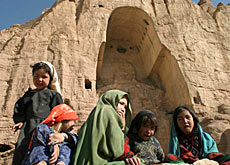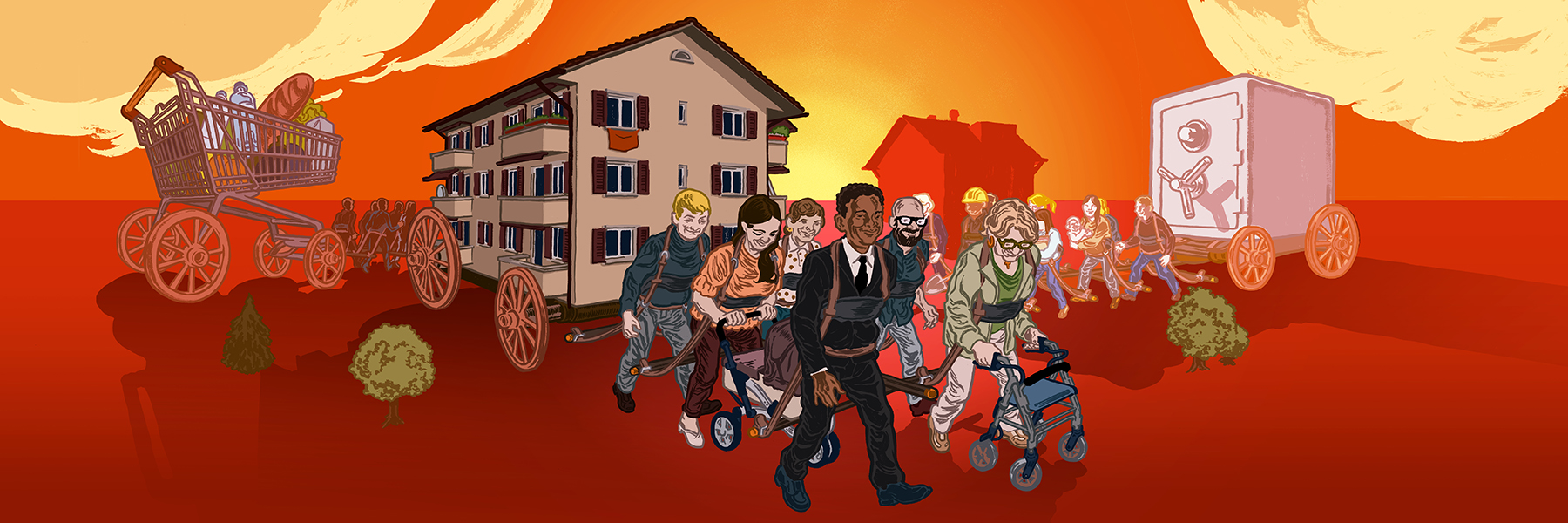
Swiss mark 50 years of protecting cultural goods

Switzerland is joining celebrations to mark 50 years of The Hague Convention of the Protection of Cultural Property in armed conflicts.
The convention, adopted in the wake of massive destruction of cultural sites during the Second World War, has evolved over the years to deal with new conflicts.
“You become aware of the importance of a cultural site or good once it is lost, just like [the Polish capital] Warsaw after the war – a jewel wiped off the face of the earth,” says François Guex of the Swiss Committee for the Protection of Cultural Property (PCB).
“That’s when you realise these sites are also important points of reference for people.”
The list of heritage sites destroyed after 1945 is endless, says Guex, and includes such treasures as the Bamiyan Buddhas in Afghanistan – destroyed by the Taliban regime – and the Croatian port of Dubrovnik, wrecked during the war in the former Yugoslavia.
National identity
“A nation’s identity is at stake if a big part of its cultural heritage is destroyed in armed conflict,” says Guex.
This realisation of the importance of national heritage sites took hold after the Second World War. After Europe buried its dead, it also counted the cost of the damage inflicted on cultural sites.
Cathedrals, libraries, museums, archives and entire towns were wiped off the map and erased from collective memory.
“Never again” promised the signatories of the United Nations Convention of the Protection of Cultural Property in the Event of Armed Conflicts, signed in The Hague in 1954.
The convention – which came into force in 1962 in Switzerland – places cultural goods under the protection of international law, just as the Geneva Conventions protect human rights during times of conflict.
Swiss measures
In Switzerland, it is the PCB which is responsible for planning and implementing measures to protect cultural heritage. The committee, which is made up of 20 experts, archaeologists, art historians and conservationists, is part of the defence ministry.
“Our work is preventative,” says Rino Büchel, the PCB’s secretary.
“We create inventories, we microfilm archives and elaborate plans of action in cases of disaster. We also develop measures to deal with natural disasters.”
There is also collaboration on an international level. For instance, after widespread flooding in the Czech Republic in 2001, Bern sent an expert and machinery to help save some of the national archives.
Detailed inventory
The Swiss inventory of cultural property currently lists 1,600 national and 6,600 regional cultural property items.
Although neutral Switzerland has been spared the ravages war over the past century, there have been a number of civil conflicts.
Most recently, Büchel cites the troubles in the Jura in the 1970s, when militants from the region – then part of canton Bern – fought for it to become a separate canton.
Several ancient monuments around canton Bern were attacked by Jura protesters, including “Fritz”, an ancient statue which had come to symbolise the Bern government.
Changing conflicts
The changing nature of conflict has prompted calls for the 1954 Convention to be updated.
“There are cases where the target isn’t the enemy’s army, but rather symbols of cultural identity such as churches or mosques,” says Guex.
To deal with this development, a supplementary protocol was developed that provides for the criminal prosecution of persons who destroy cultural property.
The second protocol, which was signed exactly five years ago, on May 14, 1999, also makes governments more directly accountable.
“Politicians can no longer hide behind the persecutors,” says Büchel. “States are now obliged to pursue those responsible.”
The PCB admits that, in practice, it is hard to define the magnitude of a “crime” against cultural property, and it is therefore difficult to set a penalty.
But Guex believes that The Hague Convention is invaluable nonetheless.
“We cannot recreate humanity, but we can take small steps towards raising awareness [of the importance of cultural goods] among the population. And that’s a massive step forward.”
swissinfo, Isabelle Eichenberger
The Swiss arm of Unesco is marking the Convention’s anniversary with a series of events in Fribourg on May 13-15.
The events celebrate 50 years of the 1954 The Hague Convention as well the implementation this year of the second protocol.
The Hague Convention for the Protection of Cultural Property in the Event of Armed Conflict has 103 signatory states.
A supplementary protocol in 1999 provides for tougher legal sanctions in the event of war, and protection measures in the civilian sphere.
Cultural property considered worthy of protection are monuments of architecture, art or history, archaeological sites, manuscripts, books, scientific collections, and centres and buildings which house a large amount of cultural property.

In compliance with the JTI standards
More: SWI swissinfo.ch certified by the Journalism Trust Initiative


































You can find an overview of ongoing debates with our journalists here . Please join us!
If you want to start a conversation about a topic raised in this article or want to report factual errors, email us at english@swissinfo.ch.